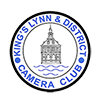Norfolk has many outstanding places to observe and photograph nature.
Here is a list of some of them and what you can expect to see.

BIRD PHOTOGRAPHY
The question you have to ask yourself is ‘Is this a bird photograph or is it a photograph with a bird in it’?
There are masses of tips for bird photography on the internet and many of them offer good tips, but many will also confuse you. With a few basics you will improve your bird photography a lot.
To get close to your subject you will almost certainly need to be using the longest lens you can, on a full frame camera 400mm and above would be good, on micro 4/3 cameras such as the OM Systems OM1 you can get excellent results with 300mm or above. I tend to use 300mm with a 1.4 converter to give me a longer reach.
Set your camera either to fully manual (M) or else Shutter priority (S) and select a speed of 1/3200th or less. Birds move really quickly and for some birds in flight you will need 1/4000th or less to freeze the action. In the latest models of mirrorless cameras you need not worry about high ISO in most cases as you’ll be able to fix this easily in post processing.
To capture birds in flight it is recommended that you use burst mode (preferably silent!) to track and follow your subject. You can use a tripod if you wish, but you should practice hand holding your camera and lens so that you can react quickly to sudden activity.
If your camera has subject detection and continuous auto focus then make use of these settings to improve your hit rate. Don’t be afraid to crop your images as you probably won’t be close enough to your subject for it to fill the frame.

The biggest investment you’ll make is time. The more time you spend in the countryside with your birds the ‘luckier’ you will get. Your habitat knowledge will improve as will your stealth. Learn about your subject use references like the excellent Collins Bird Guide.
Norfolk is one of the best counties in the UK for birdlife. I have seen more bird species in and around Norfolk in the last year than I have in the rest of my life combined! Don’t be afraid to ask, we all have favourite spots, join us on a trip out – we’ll be happy to help you to improve your shots.
Just remember for every shot you see published there are probably 500 – 1000 in the bin that didn’t make it. Try to get all of the bird in the frame, it’s really easy to think you have a great shot only to find you’ve clipped off a wing. Patience, patience, patience, the more you get out there the better your shots will get.
Malcolm Rowley Sept 2023.
Where and when to see it near here.
ABBEY FARM.
This is a small bird hide tucked away near to Sandringham. It is a great place to observe wildlife in the quiet (depending on when you go) . You can expect to see Raptors especially Marsh Harriers, Buzzards, Red Kites. There are Owls here as well, the little owl can be seen by the large split oak tree in front of the hide and a barn owl can be seen over the marshy land. The best time to get good well lit images is in the afternoon and early evening because in the morning the sun will shine directly into the hide i.e. in your face.
You may well also see other wildlife such as deer, stoats, hares etc. You may also see Goldcrests, Wrens as well as pheasants, oystercatchers, and lots of geese / ducks.

